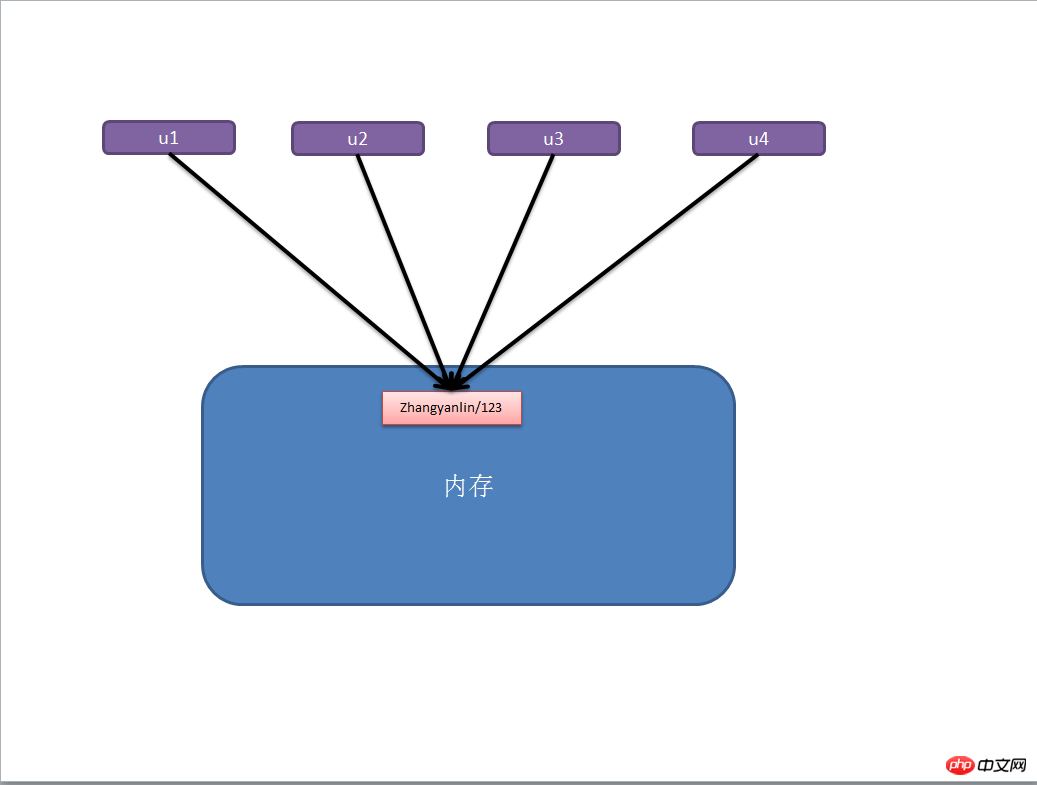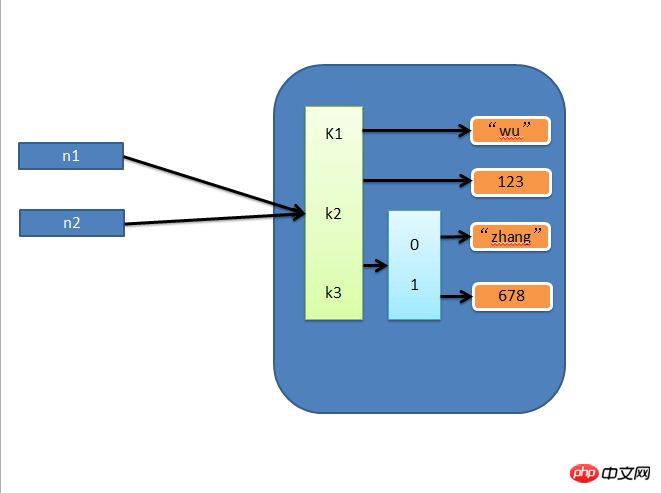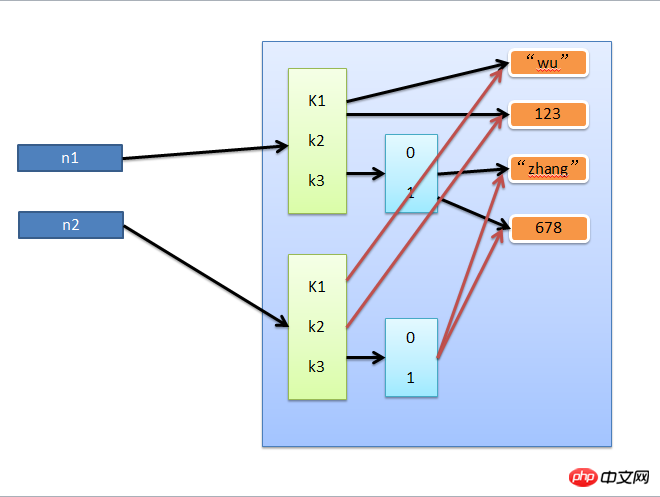Python common knowledge points
1. Set basic data type
a. Set collection is an unordered and non-repeating collection of elements
class set(object):
"""
set() -> new empty set object
set(iterable) -> new set object
Build an unordered collection of unique elements.
"""
def add(self, *args, **kwargs): # real signature unknown
"""
Add an element to a set,添加元素
This has no effect if the element is already present.
"""
pass
def clear(self, *args, **kwargs): # real signature unknown
""" Remove all elements from this set. 清楚内容"""
pass
def copy(self, *args, **kwargs): # real signature unknown
""" Return a shallow copy of a set. 浅拷贝 """
pass
def difference(self, *args, **kwargs): # real signature unknown
"""
Return the difference of two or more sets as a new set. A中存在,B中不存在
(i.e. all elements that are in this set but not the others.)
"""
pass
def difference_update(self, *args, **kwargs): # real signature unknown
""" Remove all elements of another set from this set. 从当前集合中删除和B中相同的元素"""
pass
def discard(self, *args, **kwargs): # real signature unknown
"""
Remove an element from a set if it is a member.
If the element is not a member, do nothing. 移除指定元素,不存在不保错
"""
pass
def intersection(self, *args, **kwargs): # real signature unknown
"""
Return the intersection of two sets as a new set. 交集
(i.e. all elements that are in both sets.)
"""
pass
def intersection_update(self, *args, **kwargs): # real signature unknown
""" Update a set with the intersection of itself and another. 取交集并更更新到A中 """
pass
def isdisjoint(self, *args, **kwargs): # real signature unknown
""" Return True if two sets have a null intersection. 如果没有交集,返回True,否则返回False"""
pass
def issubset(self, *args, **kwargs): # real signature unknown
""" Report whether another set contains this set. 是否是子序列"""
pass
def issuperset(self, *args, **kwargs): # real signature unknown
""" Report whether this set contains another set. 是否是父序列"""
pass
def pop(self, *args, **kwargs): # real signature unknown
"""
Remove and return an arbitrary set element.
Raises KeyError if the set is empty. 移除元素
"""
pass
def remove(self, *args, **kwargs): # real signature unknown
"""
Remove an element from a set; it must be a member.
If the element is not a member, raise a KeyError. 移除指定元素,不存在保错
"""
pass
def symmetric_difference(self, *args, **kwargs): # real signature unknown
"""
Return the symmetric difference of two sets as a new set. 对称交集
(i.e. all elements that are in exactly one of the sets.)
"""
pass
def symmetric_difference_update(self, *args, **kwargs): # real signature unknown
""" Update a set with the symmetric difference of itself and another. 对称交集,并更新到a中 """
pass
def union(self, *args, **kwargs): # real signature unknown
"""
Return the union of sets as a new set. 并集
(i.e. all elements that are in either set.)
"""
pass
def update(self, *args, **kwargs): # real signature unknown
""" Update a set with the union of itself and others. 更新 """
passb. Example of data type module
se = {11,22,33,44,55}
be = {44,55,66,77,88}
# se.add(66)
# print(se) #添加元素,不能直接打印!
#
#
#
# se.clear()
# print(se) #清除se集合里面所有的值,不能清除单个
#
#
#
# ce=be.difference(se) #se中存在,be中不存在的值,必须赋值给一个新的变量
# print(ce)
#
#
# se.difference_update(be)
# print(se) #在se中删除和be相同的值,不能赋值给一个新的变量,先输入转换,然后打印,也不能直接打印!
# se.discard(11)
# print(se) #移除指定元素,移除不存在的时候,不会报错
# se.remove(11)
# print(se) #移除指定的元素,移除不存在的会报错
# se.pop()
# print(se) #移除随机的元素
#
#
# ret=se.pop()
# print(ret) #移除元素,并且可以把移除的元素赋值给另一个变量
# ce = se.intersection(be)
# print(ce) #取出两个集合的交集(相同的元素)
# se.intersection_update(be)
# print(se) #取出两个集合的交集,并更新到se集合中
# ret = se.isdisjoint(be)
# print(ret) #判断两个集合之间又没有交集,如果有交集返回False,没有返回True
# ret=se.issubset(be)
# print(ret) #判断se是否是be集合的子序列,如果是返回True,不是返回Flase
# ret = se.issuperset(be)
# print(ret) #判断se是不是be集合的父序列,如果是返回True,不是返回Flase
# ret=se.symmetric_difference(be)
# print(ret) #对称交集,取出除了不相同的元素
# se.symmetric_difference_update(be)
# print(se) #对称交集,取出不相同的元素并更新到se集合中
# ret = se.union(be)
# print(ret) #并集,把两个元素集合并在一个新的变量中##2. Dark and shallow copy
import copy # ######### 数字、字符串 ######### n1 = 123 # n1 = "i am alex age 10" print(id(n1)) # ## 赋值 ## n2 = n1 print(id(n2)) # ## 浅拷贝 ## n2 = copy.copy(n1) print(id(n2)) # ## 深拷贝 ## n3 = copy.deepcopy(n1) print(id(n3))

n1 = {"k1": "zhangyanlin", "k2": 123, "k3": ["Aylin", 456]}
n2 = n1
import copy
n1 = {"k1": "zhangyanlin", "k2": 123, "k3": ["aylin", 456]}
n3 = copy.copy(n1)
3. Function
Object-oriented: Classify and encapsulate functions to make development "faster, better and stronger...
Function name: The name of the function. The function will be called based on the function name in the future
Function body: A series of logical calculations are performed in the function, such as: sending emails, calculating [11,22,38,888, 2], etc...
Parameters: Provide data for the function body
Return value: When the function is executed, data can be returned to the caller.
def 发送短信():
发送短信的代码...
if 发送成功:
return True
else:
return False
while True:
# 每次执行发送短信函数,都会将返回值自动赋值给result
# 之后,可以根据result来写日志,或重发等操作
result = 发送短信()
if result == False:
短信发送失败...
# Define function
# name is called the formal parameter of function func, abbreviated as: formal parameter
def func(name):
# Execute function
# 'zhangyanlin' is called the actual parameter of function func, abbreviated as: actual parameter
func('zhangyanlin')
def func(name, age = 18):
print "%s:%s" %(name, age)
# Specify Parameters
func('zhangyanlin', 19)# Use default parameters
func('nick')Note: The default parameters need to be placed at the end of the parameter list
Dynamic parametersdef func(*args): print args # 执行方式一 func(11,33,4,4454,5) # 执行方式二 li = [11,2,2,3,3,4,54] func(*li)
def func(**kwargs):
print args
# 执行方式一
func(name='wupeiqi',age=18)
# 执行方式二
li = {'name':'wupeiqi', age:18, 'gender':'male'}
func(**li)def func(*args, **kwargs): print args print kwargs
def email(p,j,k):
import smtplib
from email.mime.text import MIMEText
from email.utils import formataddr
set = True
try:
msg = MIMEText('j', 'plain', 'utf-8') #j 邮件内容
msg['From'] = formataddr(["武沛齐",'wptawy@126.com'])
msg['To'] = formataddr(["走人",'424662508@qq.com'])
msg['Subject'] = "k" #k主题
server = smtplib.SMTP("smtp.126.com", 25)
server.login("wptawy@126.com", "WW.3945.59")
server.sendmail('wptawy@126.com', [p], msg.as_string())
server.quit()
except:
set = False
return True
formmail = input("请你输入收件人邮箱:")
zhuti = input("请您输入邮件主题:")
neirong = input("请您输入邮件内容:")
aa=email(formmail,neirong,zhuti)
if aa:
print("邮件发送成功!")
else:
print("邮件发送失败!")####################More Python common knowledge points related Please pay attention to the PHP Chinese website for articles! ############

Hot AI Tools

Undresser.AI Undress
AI-powered app for creating realistic nude photos

AI Clothes Remover
Online AI tool for removing clothes from photos.

Undress AI Tool
Undress images for free

Clothoff.io
AI clothes remover

AI Hentai Generator
Generate AI Hentai for free.

Hot Article

Hot Tools

Notepad++7.3.1
Easy-to-use and free code editor

SublimeText3 Chinese version
Chinese version, very easy to use

Zend Studio 13.0.1
Powerful PHP integrated development environment

Dreamweaver CS6
Visual web development tools

SublimeText3 Mac version
God-level code editing software (SublimeText3)

Hot Topics
 1377
1377
 52
52
 How to solve the permissions problem encountered when viewing Python version in Linux terminal?
Apr 01, 2025 pm 05:09 PM
How to solve the permissions problem encountered when viewing Python version in Linux terminal?
Apr 01, 2025 pm 05:09 PM
Solution to permission issues when viewing Python version in Linux terminal When you try to view Python version in Linux terminal, enter python...
 How to efficiently copy the entire column of one DataFrame into another DataFrame with different structures in Python?
Apr 01, 2025 pm 11:15 PM
How to efficiently copy the entire column of one DataFrame into another DataFrame with different structures in Python?
Apr 01, 2025 pm 11:15 PM
When using Python's pandas library, how to copy whole columns between two DataFrames with different structures is a common problem. Suppose we have two Dats...
 How to teach computer novice programming basics in project and problem-driven methods within 10 hours?
Apr 02, 2025 am 07:18 AM
How to teach computer novice programming basics in project and problem-driven methods within 10 hours?
Apr 02, 2025 am 07:18 AM
How to teach computer novice programming basics within 10 hours? If you only have 10 hours to teach computer novice some programming knowledge, what would you choose to teach...
 How does Uvicorn continuously listen for HTTP requests without serving_forever()?
Apr 01, 2025 pm 10:51 PM
How does Uvicorn continuously listen for HTTP requests without serving_forever()?
Apr 01, 2025 pm 10:51 PM
How does Uvicorn continuously listen for HTTP requests? Uvicorn is a lightweight web server based on ASGI. One of its core functions is to listen for HTTP requests and proceed...
 How to dynamically create an object through a string and call its methods in Python?
Apr 01, 2025 pm 11:18 PM
How to dynamically create an object through a string and call its methods in Python?
Apr 01, 2025 pm 11:18 PM
In Python, how to dynamically create an object through a string and call its methods? This is a common programming requirement, especially if it needs to be configured or run...
 What are some popular Python libraries and their uses?
Mar 21, 2025 pm 06:46 PM
What are some popular Python libraries and their uses?
Mar 21, 2025 pm 06:46 PM
The article discusses popular Python libraries like NumPy, Pandas, Matplotlib, Scikit-learn, TensorFlow, Django, Flask, and Requests, detailing their uses in scientific computing, data analysis, visualization, machine learning, web development, and H
 How to avoid being detected by the browser when using Fiddler Everywhere for man-in-the-middle reading?
Apr 02, 2025 am 07:15 AM
How to avoid being detected by the browser when using Fiddler Everywhere for man-in-the-middle reading?
Apr 02, 2025 am 07:15 AM
How to avoid being detected when using FiddlerEverywhere for man-in-the-middle readings When you use FiddlerEverywhere...
 How to handle comma-separated list query parameters in FastAPI?
Apr 02, 2025 am 06:51 AM
How to handle comma-separated list query parameters in FastAPI?
Apr 02, 2025 am 06:51 AM
Fastapi ...




